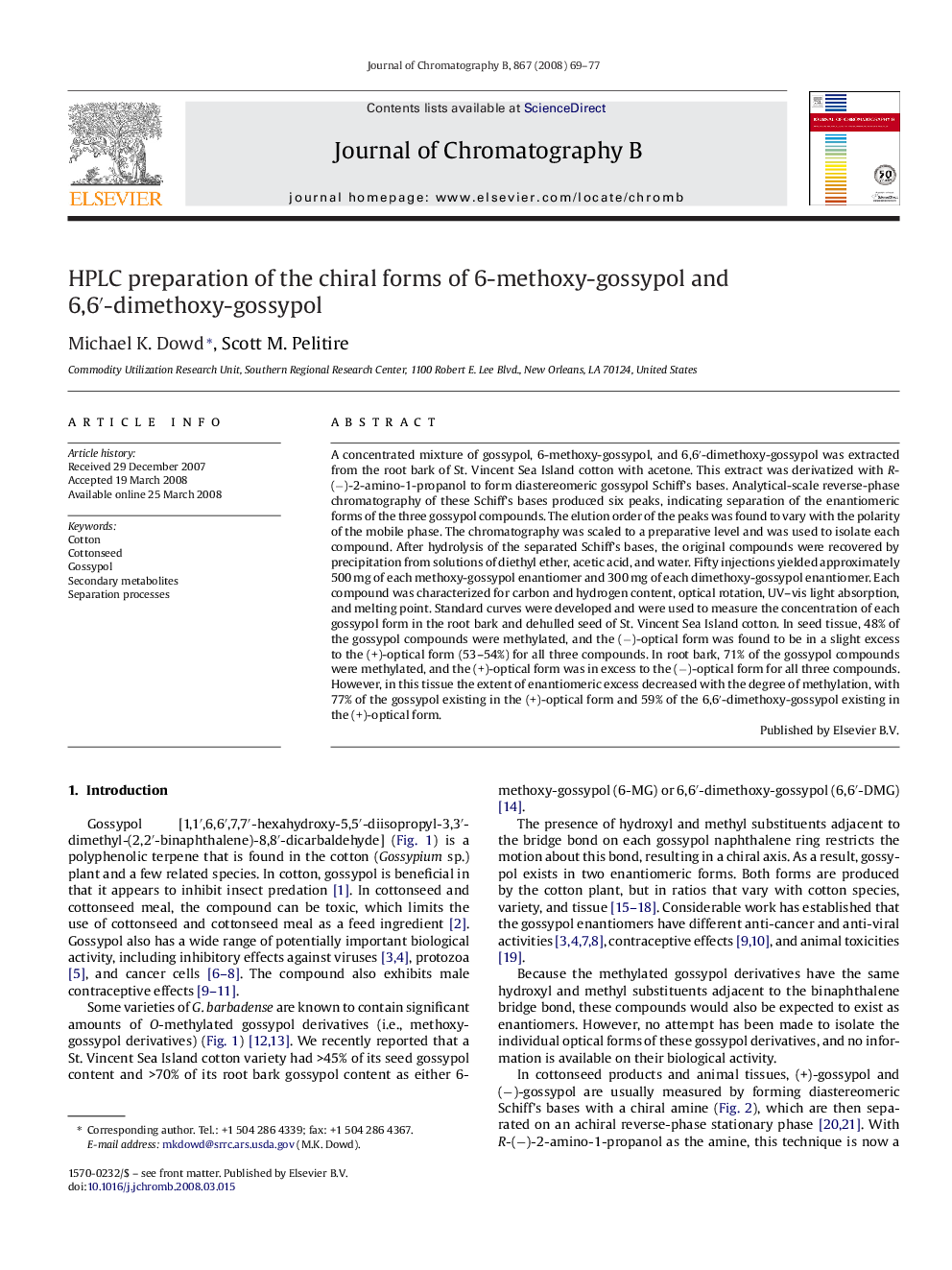| Article ID | Journal | Published Year | Pages | File Type |
|---|---|---|---|---|
| 1215215 | Journal of Chromatography B | 2008 | 9 Pages |
A concentrated mixture of gossypol, 6-methoxy-gossypol, and 6,6′-dimethoxy-gossypol was extracted from the root bark of St. Vincent Sea Island cotton with acetone. This extract was derivatized with R-(−)-2-amino-1-propanol to form diastereomeric gossypol Schiff's bases. Analytical-scale reverse-phase chromatography of these Schiff's bases produced six peaks, indicating separation of the enantiomeric forms of the three gossypol compounds. The elution order of the peaks was found to vary with the polarity of the mobile phase. The chromatography was scaled to a preparative level and was used to isolate each compound. After hydrolysis of the separated Schiff's bases, the original compounds were recovered by precipitation from solutions of diethyl ether, acetic acid, and water. Fifty injections yielded approximately 500 mg of each methoxy-gossypol enantiomer and 300 mg of each dimethoxy-gossypol enantiomer. Each compound was characterized for carbon and hydrogen content, optical rotation, UV–vis light absorption, and melting point. Standard curves were developed and were used to measure the concentration of each gossypol form in the root bark and dehulled seed of St. Vincent Sea Island cotton. In seed tissue, 48% of the gossypol compounds were methylated, and the (−)-optical form was found to be in a slight excess to the (+)-optical form (53–54%) for all three compounds. In root bark, 71% of the gossypol compounds were methylated, and the (+)-optical form was in excess to the (−)-optical form for all three compounds. However, in this tissue the extent of enantiomeric excess decreased with the degree of methylation, with 77% of the gossypol existing in the (+)-optical form and 59% of the 6,6′-dimethoxy-gossypol existing in the (+)-optical form.
